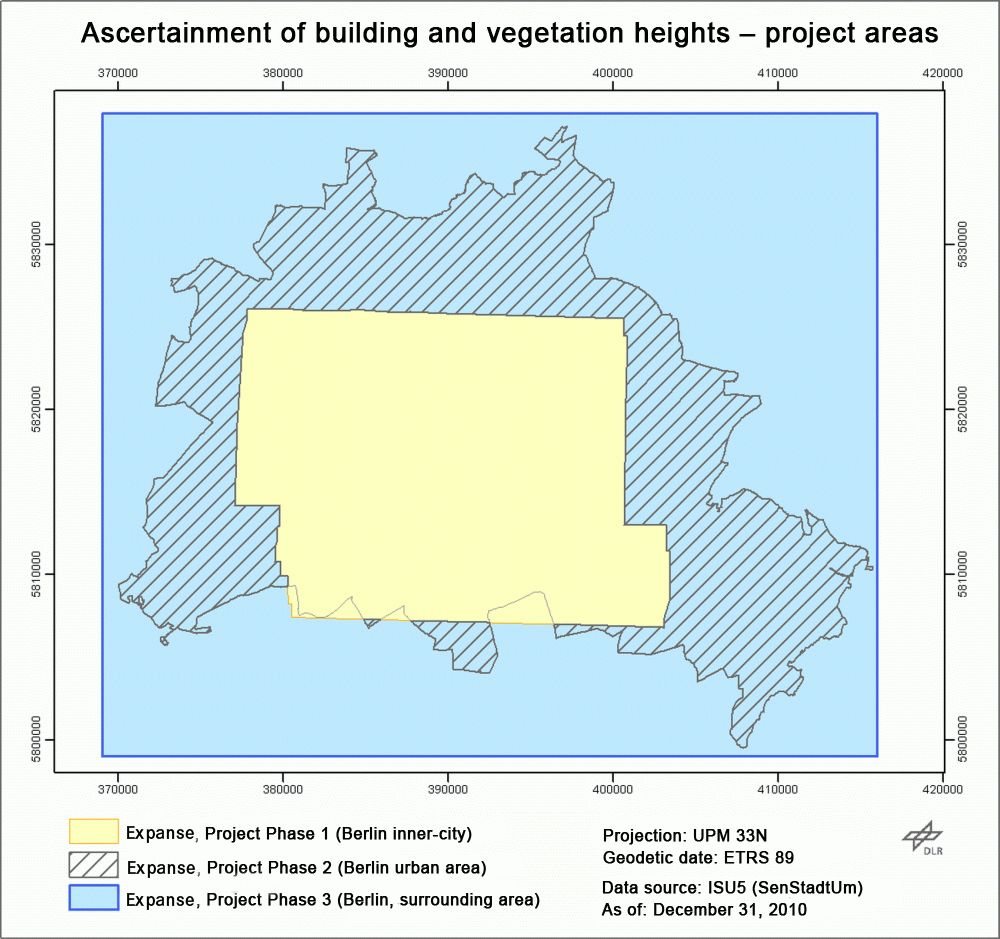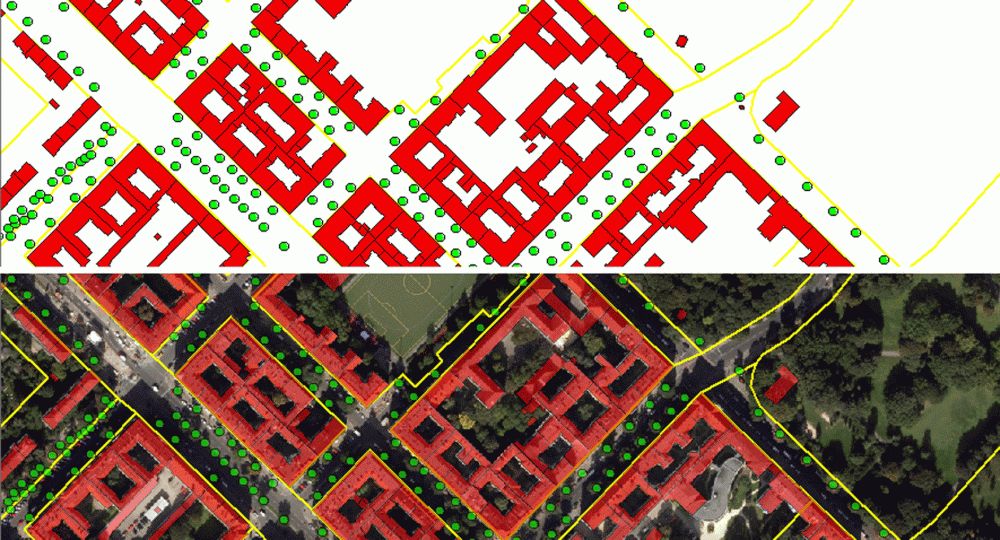Breakdown into project phases
The full-coverage processing of the area of the City of Berlin and its immediate surroundings is being carried out in two separate processing steps, which are distinguished both in terms of the available data bases and of the different morphological characters of the two working areas.
While in Phase 1 for an area of approx. 445 sq km in the city of Berlin, data very rich in detail were gathered, the data resolution was significantly less in Phase 2 on the remaining urban area and the immediate surrounding area of Berlin, an area of approx. 1,800 sq km (cf. Figure 2). This difference was due to the much more homogeneous structural and vegetation characteristics of the marginal areas of Berlin and the surrounding region. In the following, primarily the data collection and its processing during the first phase of the project, and with regard to the territory covered during that phase, are described.


